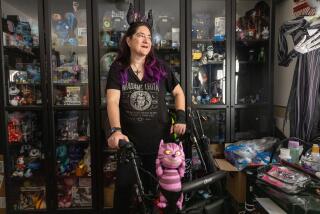Screening Rules at Airports Adjusted for the Disabled
- Share via
WASHINGTON — Security screeners at airports no longer will separate a blind passenger from a guide dog, and then take the harness off the animal, Transportation Security Administration officials said Tuesday.
Also, the screeners will ask passengers in wheelchairs if they would like to go to a private area before being searched by hand. Such procedures have become part of screener training, the officials said.
“You’ll be greeted with respect and dignity,” TSA spokeswoman Heather Rosenker said. Disabled people will see that the agency wants “to treat them with the same courtesy as an able-bodied person coming through.”
The training program was designed with the help of groups representing people with disabilities and lists guidelines that all screeners must follow.
Screeners will talk to blind passengers, helping them empty their pockets of metal and ensuring they reclaim their items at the other end of the X-ray machine. They will keep the guide dog’s harness on as the animal goes through the metal detector, then pat down the dog by hand.
Passengers in wheelchairs who can’t walk through the detectors will be offered a private area where a screener will search them by hand.
“TSA’s goal is to ensure that every passenger with a disability knows what to expect at every airport, every time, everywhere,” said Sandra Cammaroto, manager of TSA’s screening of persons with disabilities program.
David Stempler, president of the Air Travelers Assn., an advocacy group, said such procedures will make it easier for passengers with disabilities to fly.
“At a time when we’re trying to encourage people to get back on the airplanes, this should help encourage people with disabilities to fly again,” Stempler said.
More to Read
Sign up for The Wild
We’ll help you find the best places to hike, bike and run, as well as the perfect silent spots for meditation and yoga.
You may occasionally receive promotional content from the Los Angeles Times.






